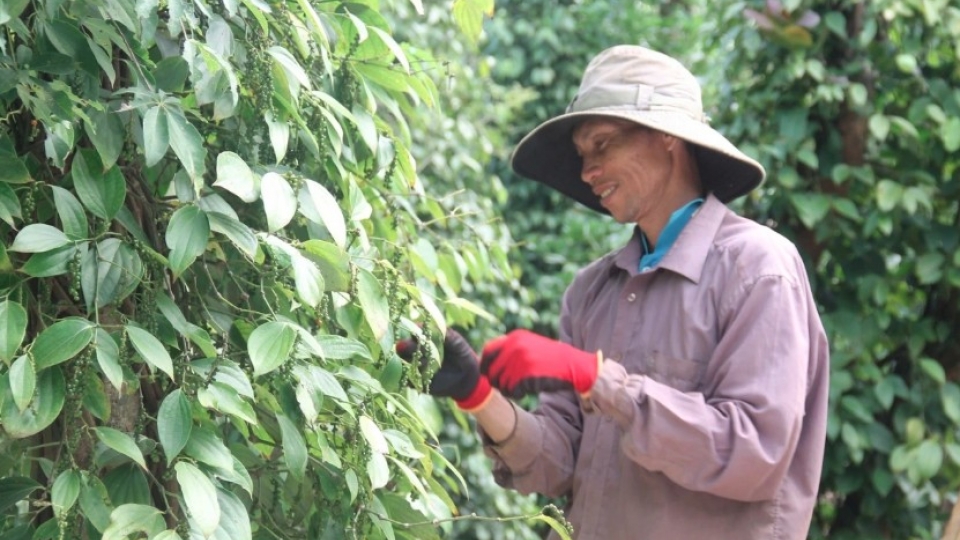Spice exports aim for US$2 billion amid rising global demand
VOV.VN - Vietnam's spice industry is targeting US$2 billion in export revenue by 2025, driven by growing global demand and expanded investment in high-quality raw material zones.

According to the Vietnam Pepper and Spice Association (VPSA), the country exported over 145,000 tonnes of pepper in the first seven months of 2025, bringing in US$988 million. While export volume fell by 11.7% year on year, revenue surged 29.3%, fueled by a sharp rise in export prices. Black pepper averaged US$6,713/tonne, up 47%, and white pepper hit US$8,756/tonne, up 41.2%.
These are the highest prices recorded in many years, indicating a clear recovery in the global pepper market and improvements in product quality and value, says Hoang Thi Lien, president of the VPSA.
Cinnamon exports also recorded strong growth, with 73,080 tonnes shipped and revenue reaching US$187.5 million, up 34.9% in volume and 21.6% in value compared to the same period in 2024. Star anise exports totaled 9,276 tonnes, raking in US$35.7 million.
The United States, India, the United Arab Emirates (UAE), and the EU remain Vietnam's key spice markets. Pepper continues to be the flagship product, with expected turnover surpassing US$1.32 billion in 2025. The US is Vietnam’s largest buyer, importing nearly 31,000 tonnes so far this year, accounting for over 21% of market share.
Meanwhile, the UK is emerging as a high-potential market. In the first four months of 2025, Vietnam was the largest pepper supplier to the UK, making up nearly 60% of its total imports by volume. Competitive pricing, steady supply, and improving quality give Vietnamese pepper a strong edge in this market.
Despite encouraging figures, Vietnam's spice industry faces stiff competition. In China, Vietnamese pepper competes with lower-cost Indonesian products, while in India, suppliers from Sri Lanka and Brazil are key challengers. Businesses are urged to adapt pricing strategies and logistics to stay competitive.
Phan Minh Thong, chairman of Phuc Sinh JSC, emphasises that quality and food safety are increasingly vital. His company has adopted global standards through farmer partnerships and training, particularly to meet US market requirements.
To sustain growth, the Vietnam Pepper and Spice Association plans to intensify trade promotion, especially in European markets like Germany and the Netherlands. Other initiatives include farmer training programmes, a pepper replanting model in key regions, and the development of a digital map of Vietnam’s spice-growing areas.




